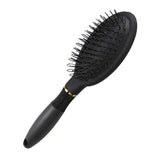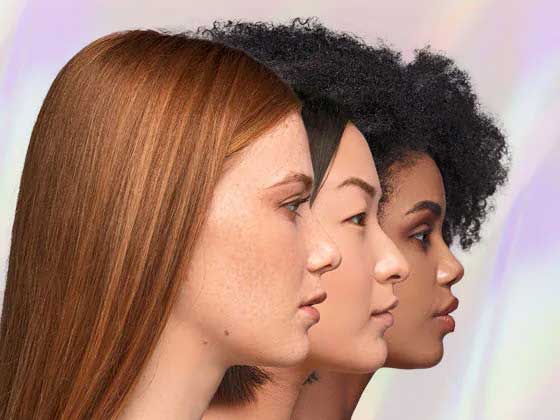When a woman first looks down and notices a ball of hair in the tub or in her hairbrush it can be truly devastating. More openly discussed and perhaps even accepted is male pattern baldness, but for women we often don’t consider losing our hair or have it thin out so much that we might as well have.

Recent research has shown that up to 50% of women can expect to experience some level of hair loss during their lifetime. You may also may not know that it’s perfectly normal to drop between 50 to 100 single strands of hair per day during a process that is called “hair shedding”. When the normal cycle of hair growth and fall becomes abnormal and you are losing more hair than is growing, you are experiencing the medical condition called “alopecia”.
The Life Cycle of Your Hair Strands
Normally, every strand of hair goes through three cycles in its life span:
- Anagen (growing phase) that ranges from 2 to 8 years
- Catagen (transition phase) that rangers from 2 to 3 weeks as the hair is pushed out of the head
- Telogen (resting phase) that ranges from 2 to 4 months as new strand of hair grows below the old one, slowly pushing it out completely for a new strand of hair to grow up from the follicle in its place.

Of the upwards of 100,000 strands of hair on our heads this cycle is able to continue uninterrupted, but in the case of an alopecia or other medical conditions that result in hair loss, the process is interrupted. Essentially the blood supply to the hair follicles becomes restricted, resulting in the hair follicle not getting enough oxygen and nutrients to remain active.

Sometimes this interruption is temporary as is the case of hormone imbalances, stress, medicines or pregnancy related hair loss. Other times it’s permanent and other solutions are needed. Firstly, you want to identify what the cause is and while we go into some of these below, it’s always important to speak to your doctor for an accurate diagnosis.
The Causes of Hair Loss

Trying to determine the root cause of your hair loss is complicated as sometimes it isn’t just one factor, but multiple factors. Some of these are within your control, especially in the instance of stress or diet, while others are not and are just an unfortunate part of the genetic lottery we all are dealt.
- Cause #1: Radiation or chemotherapy. Tackling cancer and fighting for your life is horrifying enough as it is, but the ravages to your body from radiation and chemotherapy have an impact as well. Because both radiation and chemotherapy do not discriminate when it comes to killing cancer cells and damaging hair follicles, significant hair loss is a side effect. This can be mitigated with newer methods that involve the use of what’s called a “cold cap” to slow blood flow to the scalp and keep the chemotherapy cocktail out of your hair follicles, but it’s not a completely effective method. Recovery from radiation or chemotherapy can take quite a while as hair will return
- Cause #2: Hormonal changes. Hormonal imbalances can happen for a variety of reasons and it’s critical to work with your doctor to identify the source. Since our hormones are essential to maintaining the health and function of our organs, an imbalance can lead to hair loss.
- Cause #3: Genetics. One thing we can’t control is the genes we are born with. This is the most common source of hair loss, and is called androgenic alopecia. This cause of condition is related to the natural genetic lifecycle of your body, directly connected to how your body reacts to the natural aging process. It’s not instantaneously and can take years and years, often first appearing as thinning of hair at the crown the widening of the part of your hair.
- Cause #4: Medication. Similar to radiation or chemotherapy, medications are essentially altering body chemistry to help you combat a variety of health issues both physical and mental. An unfortunate byproduct of this shifting of body chemistry is the unintended consequence that the lifecycle of your hair growth is interrupted, leading to a temporary condition of hair loss.
- Cause #5: Hairstyle or scalp health. This cause is completely temporary, often overlooked and completely correctable. Braids, ponytails, use of elastics and anything that put tension on your hair by pulling it up or back can lead to swelling of your hair follicle from the pressure. Additionally, wearing the wrong extensions, extensions too heavy for thin hair, or even overuse of extensions can also lead to temporary hair loss. Chemical services such as perming or bleaching can also be stressful to your scalp and hair follicles and can also potentially lead to hair loss.
- Cause #6: Stress. High levels of stress can be psychological but also the result of significant stress to the body and its immune system. Psychological stress as a result of mental health conditions, sudden lifestyle changes, death of a loved one, or even PTSD can manifest itself physically in the body. Additionally, bodily trauma and stress from surgery or even health conditions such as COVID-19 take a toll on the body as it throws all of its resources into fighting, healing and recovery, resources that normally go to regulating your body’s natural processes. The good news is that type of hair loss is temporary as well and full hair growth cycle restoration can occur on its own within less than a year provided you’ve addressed the cause of the stress.
What Can I Do About It?

Once you’ve determined the root of your loss you have a few options that can help. Chances are your doctor will give you a specific medical diagnosis which could include any of the following:
- Nutrient Deficiencies:You are what you eat. If you’re not feeding your body enough proteins, iron, essential vitamins, nutrients and minerals that contribute to scalp and hair health…you will experience hair loss. Addressing it is as simply as changing your diet to foods rich in Zinc, Vitamin D and B12, as well foods such as whole grains, beans, fish and eggs, and hair healthy veggies like carrots, spinach or broccoli.
- Telogen Effluvium: This is a condition recently in the headlines as being the end result of COVID-19. It is the condition mentioned above when your body is so stressed by sickness, disease or severe psychological stress that large chunks of hair can suddenly come out. Essentially your body accelerates through from the catagen to the telogen phase of the hair cycle faster than it is supposed to. Once the stress is reduced, your hair will return to normal.
- Polycystic Ovary Syndrome (PCOS): Hormonal imbalances mentioned above as a cause can trigger PCOS, the medical term for loss of hair due to the imbalance of hormones. This mostly occurs at the crown (top) of the head. In some cases lifestyle changes can correct the balance, otherwise your doctor will prescribe some medicine to correct your imbalance and the hair loss can be dramatically minimized.
There are some things you can do to minimize and mask your condition as it progress and you need more effective long term solutions to maintain your dignity and confidence.
- Use Hair Fiber products daily that electrostatically cling to your hair and add bulk and volume discreetly.
- Insert Perfect Locks Hair Fibers
- Avoid shampoos with aggressive sulfates and switch to volumizing haircare.
- Insert Perfect Locks Haircare
- Talk to your hairdresser about a cut and style that will minimize the appearance of hair loss. This can include shorter cuts with lots of depth, dimension and layers such as bobs or shags.
- Light scalp massage and even mint based oil can help to increase blood flow to the scalp and hair follicles which can help to slow some of the thinning. Just remember to be gently with your hair and scalp.
- If your hair loss is happening at the crown, our Topper units can give you instant volume and density.
- Clip-In Closures are also an option and feature a silk base that wears comfortably, just like our Topper Units.
- Insert: Perfect Locks Hair Closures
- For more advanced hair loss or even total hair loss in the case of radiation or chemotherapy, we have a long history of both knowledge and empathy working with women battling breast cancer and other health issues. Full and 100% real human wigs are always an option immediately or something you may need to transition to over time. We have Lace Front or Full Lace Wigs that are ideal and are so flawlessly made people would never know.
- Insert: Perfect Locks Wigs
No matter the reason for your hair loss or thinning, our team always will answer your questions with empathy and respect. We’re here to take the added stress of finding solutions off your plate and help you plan what you may need when you may need it.
Remember that you’re still gorgeous. We’re here for you.















